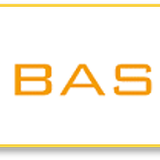Keterkaitan Pengetahuan Dan Perencanaan Keuangan Terhadap Perilaku Karyawan Pria
DOI:
https://doi.org/10.24912/je.v24i2.567Abstract
This study aims to analyze and find out the relationship between financial knowledge and financial planning on the financial behaviour of male employees with fixed income who live in Jakarta with a minimum of S1 education. This study uses primary data in the form of a questionnaire totalling 76 respondents. The program used in this study is SMART-PLS version 3.2.7 using the Structural Equation Modeling (SEM) model. The results of this study are that there is no significant influence between financial knowledge on the financial behaviour of male employees and there is a positive and significant effect
between financial planning on the financial behaviour of male employees.
References
Ajzen, I., and Fishbein, M. (1980). Understanding Attitudes and Predicting Social Behavior. New Jersey: Prentice-Hall.
Ajzen, I., and Fishbein, M. (1988). Attitudes, Personality and Behavior. Chicago: Dorsey Press.
Ajzen, I., and Fishbein, M. (1991). The Theory of Planned Behavior. Elsevier. Organizational Behavior and Human Decision Processes, 50, 179-211.
Arifin, A. Z. (2017). The Influence of Financial Knowledge, Control and Income on Individual Financial Behavior. European Research Studies Journal, XX (3A), 635-648.
Chen, Haiyang and Ronal P. Volpe. (1998). An Analysis of Personal Financial Literacy Among College Students. Financial Services Review, 7 (2): 107-128.
Chin, W. W. (1998). The Partial Least Squares Approach to Structural Equation Modeling. Modern Methods for Business Research, 295-336.
Chinen, Kenichiro and Hideki Endo. (2012). Effect of Attitude and Background on Personal Finance Ability: A Student Survey in the United State. International Journal of Management. (29) 1: 33-45.
Fishbein, M., and Azjen, I. (1975). Belief, Attitude, Intention, and Behavior: An Introduction to Theory and Research. Reading, MA: Addison-Wesley.
Furnham, dan Iqbal Hassan. (2008). Analisis Data Penelitian Dengan Statistik. Edisi Kedua. Bumi Aksara: Jakarta.
Ghozali, Imam (2015) Structural equation modeling: metode alternatif dengan partial least square (PLS). Semarang: Badan Penerbit Universitas Diponegoro.
Gitman, Lawrence J. (2002). Principle of Managerial Finance. 10th Ed. Prentice Hall: New Jersey.
Hair, J.F., Ringle, C.M. and Sarstedt, M. (2011), PLS-SEM: indeed a silver bullet, Journal of Marketing Theory and Practice, Vol. 19 No. 2, 139-152.
Henseler, J., Ringle, C. M., and Sinkovics, R. R. (2009). The Use of Partial Least Squares Path Modeling in International Marketing. Advances in International Marketing.
Hilgert, M.A and Hogart M. (2002). Financial Knowledge, Experience and Learning Preferences: Preliminary Results from a New Survey on Financial Literacy. Consumer Interest Annual, 48, 1-7.
Hilgert, M.A and Hogart M. (2003). Household Financial Management: The Connection between Knowledge and Behavior. Federal Reserve Bulletin July 2003.
Ida dan Chintia Yohana Dwinta. (2010). Pengaruh locus of control, financial knowledge, dan income terhadap financial management behavior. Jurnal Bisnis dan Akuntansi, Vol. 12, No. 3: 131-144.
Kapoor, J.R., Dlabay, L.D. and Hughes, R.J. (2004). Personal finance. New York: McGraw-Hill.
Kholilah, N. A., and Iramani, R. (2013). Studi Financial Management Behavior pada Masyarakat Surabaya. Journal of Business and Banking, 3 (1), 6980.
Krishna, A., Rofaida, R., dan Sari, M. (2010). Analisis tingkat literasi keuangan di kalangan mahasiswa dan faktor-faktor yang mempengaruhinya. Proceedings of the 4th International Conference on Teacher Education. Join Conference UPI & UPSI Bandung, Indonesia.
Lusardi, A and Mitchell, O.S. (2014). The Economic Importance of Financial Literacy: Theory and Evidence. Journal of Economic Literature, 52 (1), 5-44.
Marjanovic, Z., Greenglass, E. R., Fiksenbaum, L., and Bell, C. M. (2013). Psychometric evaluation of the Financial Threat Scale (FTS) in the context of the great recession. Journal of Economic Psychology, 36 (1), 1–10.
Nababan, D., dan Sadalia, I. (2012). Analisis personal financial literacy dan financial behavior mahasiswa strata I fakultas ekonomi Universitas Sumatera Utara. Jurnal Universitas Sumatra Utara.
Permana, Muhammad Faizin Adi. (2013). Edukasi masyarakat, OJK tempuh strategi growth base. http://ekbis.sindonews.com/read/2013/05/21/33/751185/edukasi-masyarakat-ojk-tempuh-strategi-growth-base. diakses 21 Mei 2013.
Plomp, T and Nieveen, N. (2013). Educational Design Research: An Introduction (Eds). Netherlands: SLO.
Remund, D. L. (2010). Financial literacy explicated: The case for a clear definition in an increasingly complex economy. The Journal of Consumer Affairs, 44 (2), 276–295.
Sekaran, U. and Bougie, R. (2013). Research Methods for Business: A Skill-Building Approach. 6th Edition. New York: Wiley.
Sina, PG. (2012), Motivasi Berprestasi, Literasi Keuangan Dan Mengelola Pengeluaran Rumah, Jurnal Motivasi berprestasi, Literasi keuangan, Pengeluaran.
Vitt, L. A., Anderson, C., Kent, J., Lyter, D. M., Siegenthaler, J. K., and Ward, J. (2000). Personal Finance and the Rush to Competence: Financial Literacy Education. Institute for Socio-Financial Studies, 11-18. United States.
Wetzels, M., Odekerken-Schroder, G., & Oppen, C. V. (2009). Using PLS Path Modeling For Assesing Hierarchical Construct Models: Guidelines and Empirical Illustration. MIS Quarterly, 33 (1), 177-195.
Widayati, Irin. (2012), Faktor-Faktor yang Mempengaruhi Literasi Finansial Mahasiswa Fakultas Ekonomi dan Bisnis Universitas Brawijaya, ASSET: Jurnal Akuntansi dan Pendidikan, Vol 1, No 1, 89-99. Madiun: IKIP PGRI Madiun.
Yopie Kurnia Erista Halim dan Dewi Astuti. (2015). Financial Stressors, Financial Behavior, Risk Tolerance, Financial Solvency, Financial Knowledge, dan Kepuasan Finansial. FINESTA, Vol 3, 19-23.
Yulianti, Norma dan Silvy Meliza. (2013). Sikap Pengelola Keuangan Dan Perilaku Perencanaan Investasi Keluarga Di Surabaya. Journal of Business and Banking, Vol 3, 57-68.
Downloads
Published
How to Cite
Issue
Section
License
Copyright (c) 2019 Jurnal Ekonomi

This work is licensed under a Creative Commons Attribution-NonCommercial-ShareAlike 4.0 International License.
This journal provides immediate open access to its content on the principle that making research freely available to the public supports a greater global exchange of knowledge.

This work is licensed under a Creative Commons Attribution-NonCommercial-ShareAlike 4.0 International License.


















